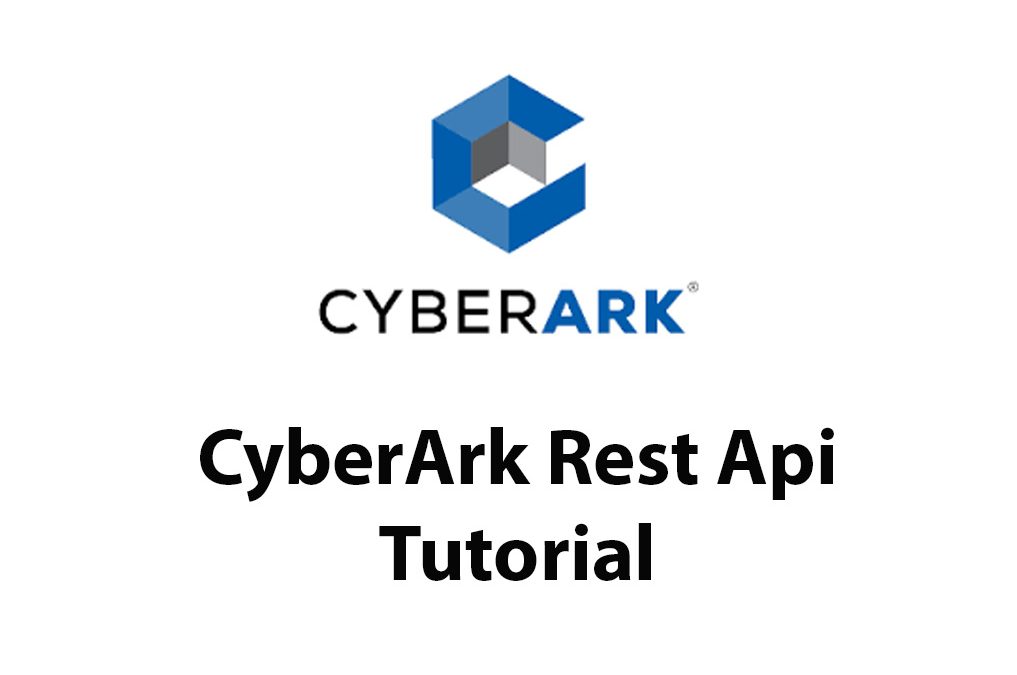Introduction:
CyberArk REST API is one of the most powerful tools in the CyberArk suite of products. This API allows for seamless integration with third-party applications, making it possible to deploy automated processes that can help organizations reduce the risks associated with managing privileged accounts and passwords. As a software developer, I have personally experienced the benefits of using this API. In this article, I’ll be sharing how to use CyberArk REST API and some best practices to make sure you get the most out of it.
Understanding CyberArk REST API:
Before we dive into the detailed steps, let’s take a brief overview of what CyberArk REST API is and how it works. REST stands for “Representational State Transfer.” This is a standard protocol for exchanging data between two systems across the internet. RESTful APIs allow developers to communicate over HTTP using simple requests and responses. In the case of CyberArk, this protocol allows developers to retrieve account, user, and password information from CyberArk’s secure vault.
One of the main advantages of CyberArk REST API is that it’s a lightweight protocol, which means that it can be quickly and easily implemented for an organization’s use case. It’s a popular method for retrieving password and account information from CyberArk’s secure vault as well as transferring data between CyberArk and other systems.
Steps to Configure CyberArk REST API:
Now that we understand what CyberArk REST API is, let’s dive into the steps to configure it. It’s important to note that the process of configuring CyberArk REST API is dependent on the version of CyberArk you’re using. However, the process below will cover the basics.
- Prerequisites for Configuration:
Before setting up CyberArk REST API, make sure you have the following items:
- Access to the CyberArk secure vault
- CyberArk admin permissions
- Machine or user credentials to authenticate the REST API
- CyberArk REST API server set up
- Configuration of CyberArk REST API:
Once you have all the prerequisites, follow the instructions listed below to configure CyberArk REST API:
i. Step One: From CyberArk admin console, navigate to ‘Platform Configuration’ and click on the ‘Web Services’ tab.
ii. Step Two: Click on ‘REST API Server and Global Settings.’ Adjust the settings for the REST API according to your organizational requirements.
iii. Step Three: Click on the ‘Certificates and Authentication’ tab. Generate a new certificate or use an existing one. Then select the ‘Set Privileges’ button and assign permissions to the certificate.
iv. Step Four: Click on the ‘Authentication Settings’ tab. Choose the desired authentication type, such as Password, Certificate, or OAuth. Then create an authentication policy in CyberArk to be used for accessing CyberArk REST API.
v. Step Five: Once all the settings are in place, test the connection between CyberArk and your desired application, using the API Gateway’s URL.
- Validating Configuration:
After configuring and testing the connection between CyberArk and your application, ensure that the ‘Enable REST API’ toggle is set to ‘yes.’ Test the API by making a REST API call to CyberArk from your application. This will help you validate that the setup is correct, and everything is communicating correctly.
Basic Operations Using CyberArk REST API:
Now that we’ve successfully configured CyberArk REST API, let’s explore how to retrieve account, user, and group information. These are the three most common operations when working with CyberArk.
- Retrieving Account Information:
The following steps outline how to retrieve account information using CyberArk REST API:
i. Step One: Authenticate and authorize against CyberArk REST API by using the CyberArk authentication policy created during the configuration process.
ii. Step Two: Connect to your desired account in CyberArk’s secure vault.
iii. Step Three: Verify that the application can access and retrieve the account information.
- Retrieving User Information:
The following steps outline how to retrieve user information using CyberArk REST API:
i. Step One: Authenticate and authorize against CyberArk REST API by using the CyberArk authentication policy created in the configuration process.
ii. Step Two: Connect to your desired user in CyberArk’s secure vault.
iii. Step Three: Verify that the application can access and retrieve the user information.
- Retrieving Group Information:
The following steps outline how to retrieve group information using CyberArk REST API:
i. Step One: Authenticate and authorize against CyberArk REST API by using the CyberArk authentication policy created in the configuration process.
ii. Step Two: Connect to your desired group in CyberArk’s secure vault.
iii. Step Three: Verify that the application can access and retrieve the group information.
Advanced Operations Using CyberArk REST API:
Now that we’ve covered how to retrieve basic account, user and group information from CyberArk, let’s look at some more advanced uses for CyberArk REST API.
- Retrieving Password Information:
The following steps outline how to retrieve password information using CyberArk REST API:
i. Step One: Authenticate and authorize against CyberArk REST API by using the CyberArk authentication policy created in the configuration process.
ii. Step Two: Connect to your desired password in CyberArk’s secure vault.
iii. Step Three: Verify that the application can access and retrieve the password information.
- Retrieving Secret Information:
The following steps outline how to retrieve secret information using CyberArk REST API:
i. Step One: Authenticate and authorize against CyberArk REST API by using the CyberArk authentication policy created in the configuration process.
ii. Step Two: Connect to your desired secret in CyberArk’s secure vault.
iii. Step Three: Verify that the application can access and retrieve the secret information.
- Retrieving Access Control:
The following steps outline how to retrieve access control information using CyberArk REST API:
i. Step One: Authenticate and authorize against CyberArk REST API by using the CyberArk authentication policy created in the configuration process.
ii. Step Two: Connect to your desired access control in CyberArk’s secure vault.
iii. Step Three: Verify that the application can access and retrieve the access control information.
Best Practices for Using CyberArk REST API:
Finally, to ensure you get the most out of CyberArk REST API, it is important to adopt some best practices to keep the process as secure as possible.
- Authentication Management:
It’s important to ensure that the authentication used to access CyberArk REST API is robust and secure. This includes the use of strong passwords, two-factor authentication,
and multi-factor authentication. Additionally, auditing and logging should be set up to monitor all API activity.
- Access Control Management:
Access control management aims to ensure that only authorized users can access CyberArk REST API. It’s important to set and maintain a secure level of access control to prevent unauthorized users from gaining access to sensitive information. For example, access should be granted only to specific users and groups, and privileges should only be assigned on a “need-to-know” basis.
- Error Management:
When using CyberArk REST API errors can occur. However, it’s important to ensure that these errors are effectively managed and tracked. Organizations should have a system that logs and monitors error messages and sends notifications to designated individuals or teams, who can quickly troubleshoot and resolve issues as they arise.
Conclusion:
In this article, we’ve covered how to use CyberArk REST API to retrieve account, user and group information, and other more advanced operations like accessing passwords, secrets and access controls. While it is possible to access CyberArk’s secure vault without using the API, it allows you to integrate it with third-party applications, making it ideal for automating tasks that would typically require manual input.
To maximize the benefits of CyberArk REST API, organizations must follow best practices, such as adopting strict authentication and access control, and effective error management. With the right implementation and management of CyberArk REST API, organizations can access the sensitive information they need safely and securely.

How To Use GitHub REST Api
As a software developer, I know the importance of version control and keeping track of changes to code. That’s why I was thrilled when I first discovered Github API. Github API is a powerful tool used by developers to access and manipulate data within Github repositories. In this article, I’ll take a deep dive into […]

How To Create A REST Api With Express JS
Introduction Hey there! Today I’m going to walk you through the process of creating a REST API with Express JS. REST APIs have become an essential part of modern web and mobile app development, and they allow us to build efficient and scalable backends for our applications. Express JS is a powerful Node.js framework that […]

What Is A Rest Api: Everything You Need To Know
Introduction: Hey guys, welcome to my new article! Today we are going to talk about RESTful APIs. Don’t worry if you’ve never heard of a RESTful API before, because we are going to explore what they are, how they work, how they are built, and their many benefits. You might be thinking: “I know what […]

JIRA Cloud Api
Introduction As a project manager, I understand the importance of using tools and technology to streamline workflows and increase productivity. That’s why I want to share my experience using Jira Cloud API, a powerful tool for customizing, automating, and integrating Jira Cloud with other applications. In this article, I’ll introduce you to Jira Cloud API […]

